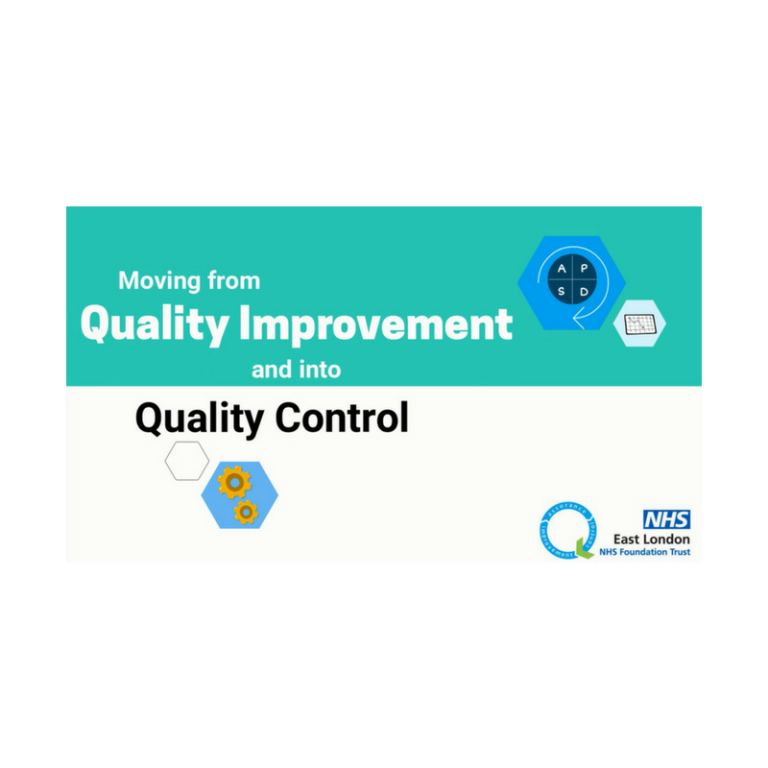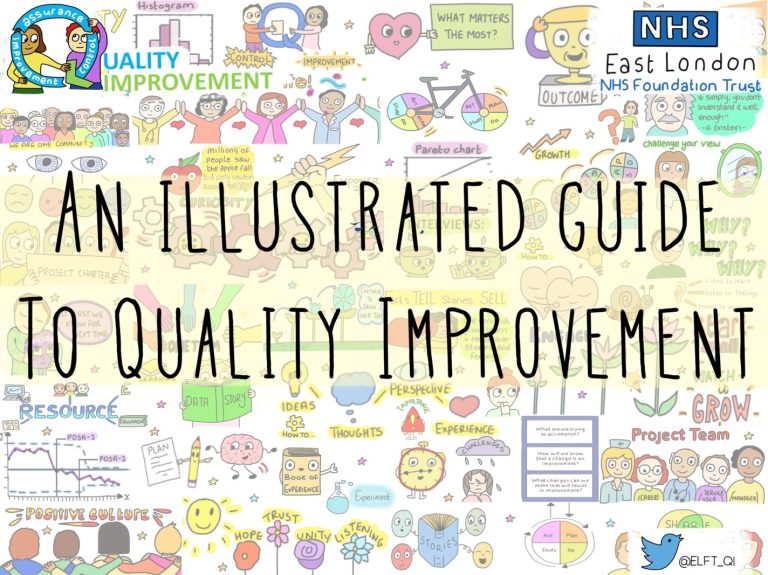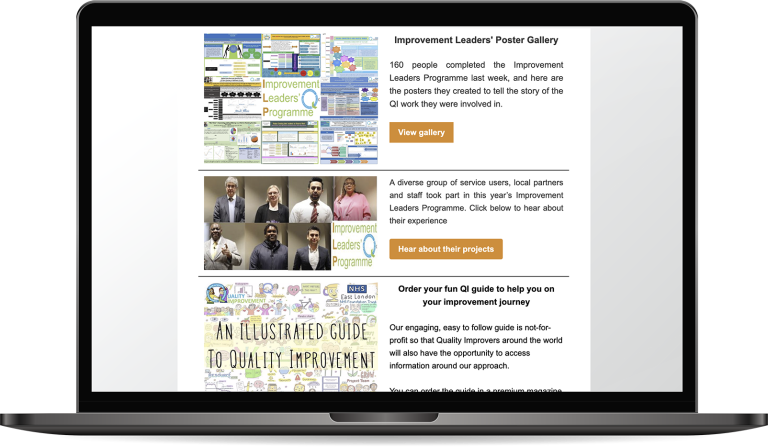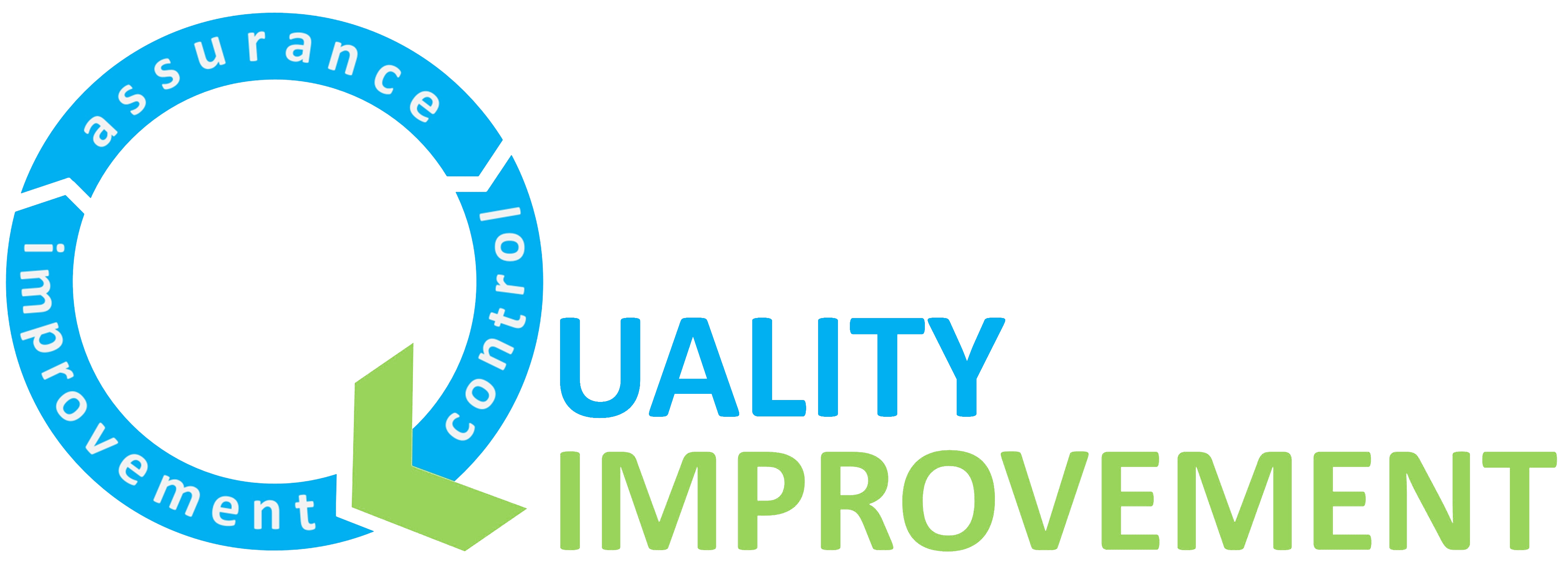
A Quality Improvement Approach to DNAnudge/COVID-19 Point-of-Care Testing in Mental Health
14th August 2020
By Jamie Stafford, Senior Improvement Advisor
In recent months, a team of staff in Tower Hamlets have begun using Quality Improvement to try and improve Point-of-Care COVID-19 testing, in order to reduce the amount of time service users are required to spend in isolation, thereby improving service user and staff experience.
In order to structure this quality improvement project, the team have been following the ELFT Sequence of Improvement, and are currently in the early stages of the ‘Testing’ phase in the diagram below.
 Figure 1. The ELFT Sequence of Improvement
Figure 1. The ELFT Sequence of Improvement
Identification of a quality issue
During the COVID-19 pandemic, staff soon identified a quality issue with their COVID-19 testing process, as test results were taking at least 24 hours to be returned, and were not always accurate. This meant that service users were spending long periods of time in isolation, causing them much distress.
Once this quality issue was identified, an improvement team, containing staff members with differing perspectives of the problem, was formed. It included: DNAnudge staff, the Ward Matron and Consultant Psychiatrist, Infection Control staff, IT staff, the People Participation Lead, and an Improvement Advisor. After the team was formed, the improvement project was registered on Life QI, and a project charter was completed. Thereafter, Project Leads, and a Project Sponsor were chosen, and it was agreed that the team would meet virtually, for an hour, every Wednesday afternoon.
Using the Model for Improvement, the improvement team considered the following questions:
1) What are we trying to accomplish?
The improvement team determined that the aim of the project would be to improve the speed and accuracy of COVID-19 testing, thereby reducing service user distress caused by isolation.
2) How will we know that a change is an improvement?
The improvement team decided that the following measures would be important in determining whether a change is an improvement:
- Time taken to complete a test
- Test accuracy
- Time spent in isolation
- Number of staff tested
- Qualitative experience data
- Positivity percentage of staff test
3) What changes can we make that will result in improvement?
The improvement team hypothesised that the DNAnudge equipment could result in faster, more reliable testing, and would, therefore, reduce the amount of time service users spent in isolation. They also planned to ask service users to identify other ways of reducing distress during isolation.
Understanding the problem
Data
In order to understand the variation in time spent in isolation better, the improvement team collected data, displayed in the I-chart below.
 Figure 2. The length of time in hours that each individual spent in isolation, from the end of April, 2020, to the beginning of June, 2020.
Figure 2. The length of time in hours that each individual spent in isolation, from the end of April, 2020, to the beginning of June, 2020.
The l-chart indicated that there were four sigma violations during this time period, which meant that certain people had spent longer in isolation than would be expected for this data set. Further exploration revealed that this was because they had tested positive for COVID-19, and, therefore, isolation had continued after their test results were known. The average time spent in isolation during the baseline period was 29 hours.
Service user experience
The improvement team co-designed an MS Form questionnaire with the inpatient service user group, in order to learn more about their experience of isolation. The questionnaire was then circulated amongst clinicians at the Tower Hamlets Centre for Mental Health, and 49 responses were received. Some of these responses are shown in the table below:
Figure 3. A table containing some examples of the questions and answers from the MS Form questionnaire given to service users to complete.
Developing a strategy and change ideas
The improvement team used Menti.com, an online survey tool, to collect ideas, and start to identify primary drivers for their improvement work. Based on this information, as well as their different perspectives regarding the inpatient context, and DNAnudge kit, they were able to develop an initial driver diagram, as shown below. This driver diagram shows on one page, the theory of what components will help achieve the aim.
 Figure 4. A Driver Diagram outlining the Tower Hamlets improvement project.
Figure 4. A Driver Diagram outlining the Tower Hamlets improvement project.
Planning for Testing
As the improvement team are currently in the early stages of testing, they have yet to fully understand the impact the new kit will have on service users and staff. While waiting for the kit to arrive, however, they have shared an instruction manual with staff, and have begun teaching them how to use it. The improvement team have also developed a Process Map that shows staff the process of conducting and recording a test, as well as how the test result affects a service user’s isolation plan.
 Figure 5. A Process Map outlining the process for using DNAnudge.
Figure 5. A Process Map outlining the process for using DNAnudge.
Early learning
The improvement team have learnt the following lessons so far from their experience of implementing their DNAnudge project:
- The potential for improvement in experience of care is huge, as demonstrated by the strength of negative feeling from service users about their time in isolation.
- A Quality Improvement approach helped structure the improvement project, as well as organise the improvement team.
- The improvement team made rapid progress, and were able to bring multiple stakeholders together to focus on an important issue.
- Having the service user voice central to the improvement project was a powerful motivator. This was further heightened by service user participation in project meetings and testing.
- It was important to involve the IT team when introducing new technology. The improvement team considered ways to link the DNAnudge boxes to the Clinical Records System, RiO, but ultimately decided the most pragmatic solution was for nursing staff to manually enter the results onto RiO, using a progress note, and RiO code.
- Testing new equipment as early as possible was helpful, as the improvement team were able to identify local practical challenges with WiFi access, which they were then able to mitigate with some testing.
Most Read Stories
-
Why is Quality Control important?
18th July 2018

-
An Illustrated Guide to Quality Improvement
20th May 2019

-
2016 QI Conference Poster Presentations
22nd March 2016
-
Recognising Racism: Using QI to Help Take Action
21st January 2021

-
Using data enabled us to understand our problem
31st March 2023

-
QI Essentials: What does a Chief Quality Officer do?
18th March 2019


Follow QI on social media
To keep up to date on the latest concerning QI at ELFT, follow us on our socials.



